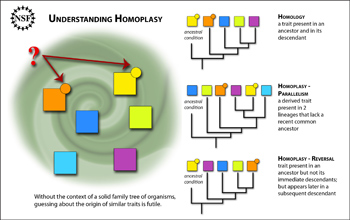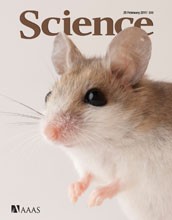All Images
News Release 11-041
Homoplasy: A Good Thread to Pull to Understand the Evolutionary Ball of Yarn
Studying the many potential reasons why the same trait has independently evolved in different species (homoplasy) can improve our understanding of the genetic, developmental and evolutionary relationships among species
This material is available primarily for archival purposes. Telephone numbers or other contact information may be out of date; please see current contact information at media contacts.

Homoplasy is a fascinating and unusual occurrence in evolution. It is the independent acquisition of the same trait in unrelated lineages. To understand whether multiple organisms share the same trait because of homoplasy, their places in the evolutionary tree of life must be defined.
Parallelism/convergence homoplasy occurs when the same trait is present in two lineages that lack a recent common ancestor. Reversal homoplasy occurs when a trait is present in an ancestor but not its immediate descendants; but appears later in a subsequent descendant.
Credit: Zina Deretsky
Download the high-resolution JPG version of the image. (293 KB)
Use your mouse to right-click (Mac users may need to Ctrl-click) the link above and choose the option that will save the file or target to your computer.

The researchers' findings are described in the February 25, 2011 issue of the journal Science.
Credit: Copyright AAAS 2011
Download the high-resolution JPG version of the image. (626 KB)
Use your mouse to right-click (Mac users may need to Ctrl-click) the link above and choose the option that will save the file or target to your computer.


